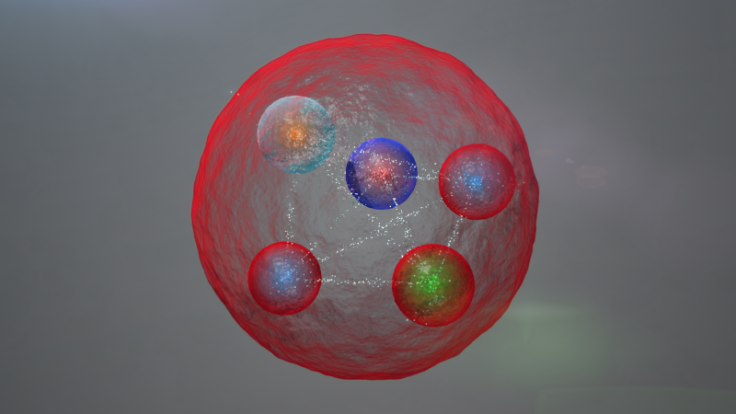Pentaquark Discovery Confirmed: The Exotic Five-Quark Particle Detected By CERN’s LHCb Experiment Is Here To Stay

Last year, scientists associated with the LHCb experiment at the European Organization for Nuclear Research’s Large Hadron Collider (LHC) announced the discovery of the pentaquark — an exotic new class of particles. Now, two new studies published Thursday in Physical Review Letters have confirmed, with extremely high statistical significance, that the discovery was, in fact, real.
“One study demonstrates that the evidence for pentaquarks in the discovery data is model independent. Another reports evidence for exotic hadronic particles—whose properties are consistent with those of the previously observed pentaquarks—in a new particle-decay channel,” the American Physical Society, which publishes the journal in which the two studies were published, said in a synopsis released Thursday.
Quarks, the fundamental particles that make up protons and neutrons, come in six different “flavors” — up, down, strange, top, bottom and charm. Each quark has an anti-matter equivalent known as antiquark. Both protons and neutrons — contained within the nucleus of an atom — are made up of three quarks bound together.
The 1964 model that first proposed the existence of quarks also postulated the existence of a pentaquark — a particle composed of five quarks. In 2002, several labs reported finding evidence of this particle. However, these discoveries were later undermined by other experiments, which eventually led it to be pronounced a statistical error in 2005.
“It’s as if the previous searches were looking for silhouettes in the dark, whereas LHCb conducted the search with the lights on, and from all angles,” the researchers who analyzed data from the LHCb experiments said in a statement released last July.
Physicists at CERN first saw a signal in 2012 hinting at the unexpected appearance of two extremely short-lived objects weighing 4.38 gigaelectronvolts and 4.45 gigaelectronvolts — much heavier than a proton — during the decay of subatomic particles known as ‘Lambda B’ baryons, which are made up of three quarks. After measuring the new objects’ properties, the researchers concluded that they corresponded to that of a pentaquark.
One of the new studies also found that sometimes when the Lambda B baryons decay, they turn into an intermediate state comprising a five-quark particle and a kaon, which is a type of meson — particles made of two quarks. The other study proved, with a whopping statistical significance of nine sigma — much higher than the five sigma gold standard — that pentaquarks were needed to explain the data.
The discovery is an essential step toward expanding our understanding of the strong nuclear force — the least understood of the four known fundamental forces — works, which, in turn, would allow us to better understand the fundamental particles that make up ordinary matter, including protons and neutrons.
© Copyright IBTimes 2024. All rights reserved.






















